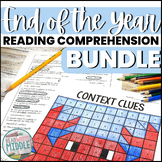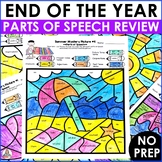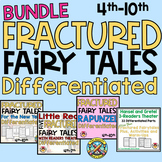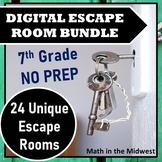14 results
7th grade informational text interactive whiteboards by TpT sellers for TpT sellers
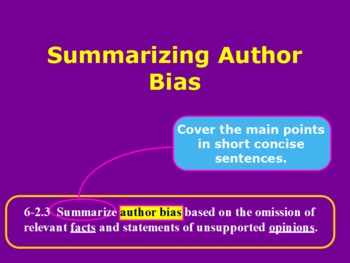
Summarizing Author Bias
This is a flipchart/mini-lesson on author bias. The flipchart contains checking for understanding questions that can be used with Activ-Expression devices after concepts have been given, a link to a two passages from a 1916 Toronto newspaper with reading comprehension questions. This flipchart goes directly with South Carolina State Standards.
Grades:
5th - 8th

Interpreting Informational Text
This is a flipchart/mini-lesson on Information Text, text elements, graphic features and functional text features. The flipchart contains checking for understanding questions that can be used with Activ-Expression devices after concepts have been given, a link to a BrainPop connecting video as well as two TFK passages with reading comprehension questions. This flipchart goes directly with South Carolina State Standards.
Grades:
5th - 8th
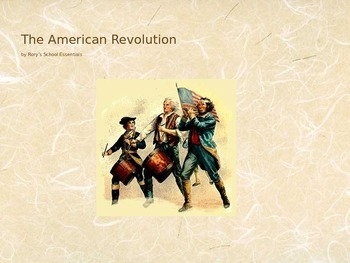
Taxation without Representation and the American Revolution
This American history PowerPoint presentation from Rory's School Essentials thoroughly covers the tax acts that were imposed on the colonists by British Parliament and the events that followed and led to the American Revolution. The PowerPoint discusses the reasons for these tax acts, the tax acts themselves, the reasons that colonists found them unjust, and the actions the colonists took in response to these taxes. The PowerPoint explores taxation without representation, the Continental Congr
Subjects:
Grades:
5th - 7th
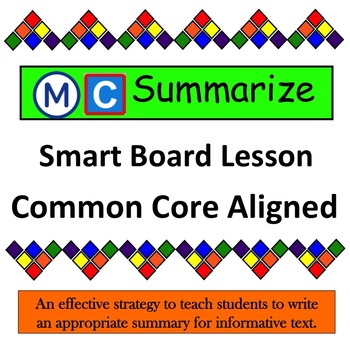
Summarizing Lesson and Graphic Organizer
This lesson focuses on teaching students how to write an effective informative summary. It uses an effective strategy using the main idea and categories to help the student identify important information.
It is a scaffolded approach to teaching summarizing with a gradual release process. The lesson encompasses the following:
-28 SmartBoard Slides
-Content objectives
-Vocabulary
-Activating Prior Knowledge
-Teacher Instruction (Gradual Release)
-Student Practice
-Links to articles used in les
Grades:
6th - 9th
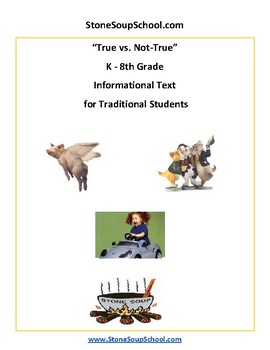
K - 8 True vs Not True for Traditional Students
This educational resource pack includes: Informational Text: “True versus Not True” definitions and examples.Modified for traditional studentsBased on Depth of Knowledge – Two Levels regarding: reciting and identifying Fill in the Blanks Tests with Answers Key; ESSA -Well -Rounded concept: Reading and WritingThe students recite the statement with its image and then guess “True” or “Not True” out loud. The students read the informational text in the answer key. The students will identify the
Subjects:
Grades:
K - 8th
Also included in: Grade 3: Bundle for Traditional Students
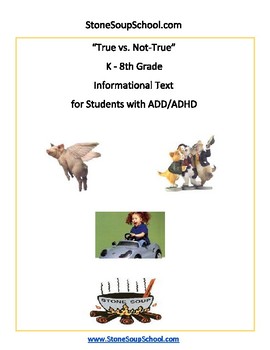
K - 8, True vs Not True for Students with ADD/ADHD
This educational resource pack includes: Informational Text: “True versus Not True” definitions and examples.Modified for traditional studentsBased on Depth of Knowledge – Two Levels regarding: reciting and identifying Fill in the Blanks Tests with Answers Key; ESSA -Well -Rounded concept: Reading and WritingThe students recite the statement with its image and then guess “True” or “Not True” out loud. The students read the informational text in the answer key. The students will identify the
Subjects:
Grades:
K - 8th
Also included in: Grade 3, Bundle For Students with ADD and/or ADHD
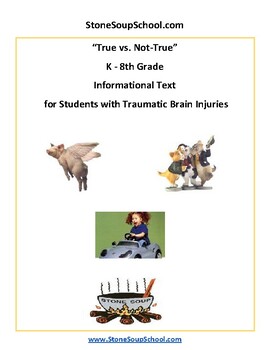
K - 8 True vs Not True for Students w/ Traumatic Brain Injuries
This educational resource pack includes: Informational Text: “True versus Not True” definitions and examples.Modified for traditional studentsBased on Depth of Knowledge – Two Levels regarding: reciting and identifying Fill in the Blanks Tests with Answers Key; ESSA -Well -Rounded concept: Reading and WritingThe students recite the statement with its image and then guess “True” or “Not True” out loud. The students read the informational text in the answer key. The students will identify the
Subjects:
Grades:
K - 8th
Also included in: Grade K- 2, Bundle for Students w/ Traumatic Brain Injuries
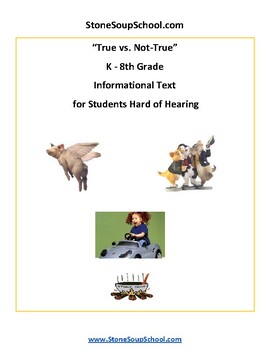
K- 6: True vs Not True for Students Hard of Hearing
This educational resource pack includes: Informational Text: “True versus Not True” definitions and examples.Students who are hard of hearing may use speech, lip reading, hearing aids and/or amplification systems to enhance oral communication. Headphones with blue tooth compatibility can also improve their mobility. However, it helps to use visual aids whenever possible, including captioned versions of videos and films. Also, provide unfamiliar vocabulary in written form, on the blackboard, or
Subjects:
Grades:
K - 8th
Also included in: K- 2 Grade Bundle for Students Hard of Hearing
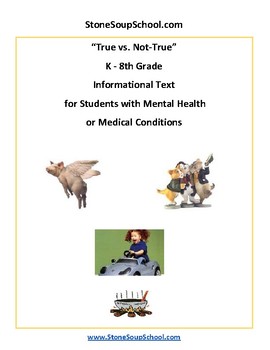
K- 8:"True vs Not True" for students with M H/ or Medical Conditions
This educational resource pack includes: Informational Text: “True versus Not True” definitions and examples.Modified for students with Mental Health or Medical Conditions. Students with Mental Health Conditions require sequential memory tasks, such as spelling, math, with step-by-step instructions. They may be more easily understood by dividing tasks into smaller ones. Students with Medical Conditions also require enlarged printed materials. Here are teaching strategies for students w/Mental
Subjects:
Grades:
K - 8th
Also included in: K- 2 Grade Bundle for Students w/ M H or Medical Conditions
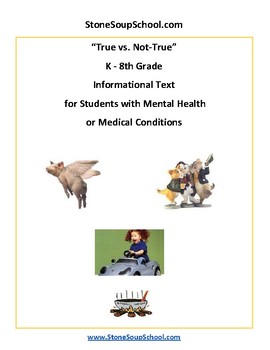
K - 8: True vs Not True for students with M H/ or Medical Conditions
This educational resource pack includes: Informational Text: “True versus Not True” definitions and examples.Modified for traditional studentsBased on Depth of Knowledge – Two Levels regarding: reciting and identifying Fill in the Blanks Tests with Answers Key; ESSA -Well -Rounded concept: Reading and WritingThe students recite the statement with its image and then guess “True” or “Not True” out loud. The students read the informational text in the answer key. The students will identify the
Subjects:
Grades:
K - 8th
Also included in: K- 2 Grade Bundle for Students w/ M H or Medical Conditions
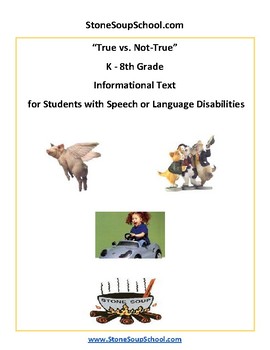
K - 8: True vs Not True for Speech or Language Challenged
This educational resource pack includes: Informational Text: “True versus Not True” definitions and examples.Based on Depth of Knowledge – Two Levels regarding: reciting and identifying Fill in the Blanks Tests with Answers Key; ESSA -Well -Rounded concept: Reading and WritingThe students recite the statement with its image and then guess “True” or “Not True” out loud. The students read the informational text in the answer key. The students will identify then cut and paste or write in the c
Subjects:
Grades:
K - 8th
Also included in: Grade K- 2, Bundle for Students w/ Speech & Language Challenges
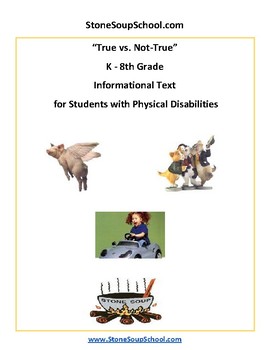
K - 8 True vs Not True for Students w/ Physical Challenges
This educational resource pack includes: Informational Text: “True versus Not True” definitions and examples.Modified for traditional studentsBased on Depth of Knowledge – Two Levels regarding: reciting and identifying Fill in the Blanks Tests with Answers Key; ESSA -Well -Rounded concept: Reading and WritingThe students recite the statement with its image and then guess “True” or “Not True” out loud. The students read the informational text in the answer key. The students will identify the
Subjects:
Grades:
K - 8th
Also included in: K- 2 Grades Bundle for Students with Physical Disabilities
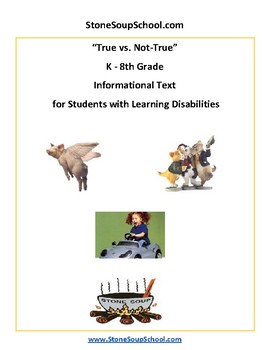
K - 8 True vs Not True for Students w/ Learning Disabilities
Students with Learning Challenges require the use of handouts and visual aids, word processor with spell-checker and/or voice output to provide auditory feedback.
Subjects:
Grades:
K - 8th
Also included in: K-2: Bundle, Students with Learning Challenges
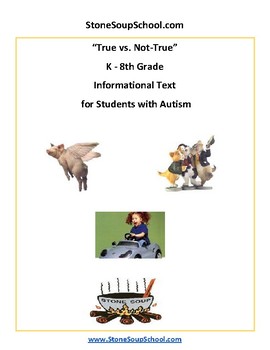
K - 8, True vs Not True for Students with Autism
This educational resource pack includes: Informational Text: “True versus Not True” definitions and examples.Modified for traditional studentsBased on Depth of Knowledge – Two Levels regarding: reciting and identifying Fill in the Blanks Tests with Answers Key; ESSA -Well -Rounded concept: Reading and WritingThe students recite the statement with its image and then guess “True” or “Not True” out loud. The students read the informational text in the answer key. The students will identify the
Subjects:
Grades:
K - 8th
Also included in: K - 2, Bundle for Students with Autism
Showing 1-14 of 14 results


